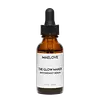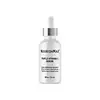What's inside
What's inside
 Key Ingredients
Key Ingredients

 Benefits
Benefits

 Concerns
Concerns

No concerns
 Ingredients Side-by-side
Ingredients Side-by-side

Water
Skin ConditioningAscorbic Acid
AntioxidantEthoxydiglycol
HumectantAloe Barbadensis Leaf Juice
Skin ConditioningVitis Vinifera
MaskingGlycerin
HumectantSodium Hyaluronate
HumectantMagnolia Officinalis Bark Extract
AntimicrobialTocopherol
AntioxidantXanthan Gum
EmulsifyingFerulic Acid
AntimicrobialLecithin
EmollientDisodium EDTA
Sodium Metabisulfite
AntioxidantCitrus Aurantium Dulcis Callus Culture Extract
Skin ConditioningEthylhexylglycerin
Skin ConditioningMaltodextrin
AbsorbentTriethanolamine
BufferingPhenoxyethanol
PreservativeWater, Ascorbic Acid, Ethoxydiglycol, Aloe Barbadensis Leaf Juice, Vitis Vinifera, Glycerin, Sodium Hyaluronate, Magnolia Officinalis Bark Extract, Tocopherol, Xanthan Gum, Ferulic Acid, Lecithin, Disodium EDTA, Sodium Metabisulfite, Citrus Aurantium Dulcis Callus Culture Extract, Ethylhexylglycerin, Maltodextrin, Triethanolamine, Phenoxyethanol
Water
Skin Conditioning3-O-Ethyl Ascorbic Acid
Skin ConditioningSodium Ascorbyl Phosphate
AntioxidantGlycerin
HumectantButylene Glycol
HumectantPEG-8
HumectantPropanediol
SolventGlycereth-7 Triacetate
EmollientTetrahexyldecyl Ascorbate
AntioxidantPsidium Guajava Leaf Extract
AstringentSaccharomyces Lysate Extract
HumectantNonapeptide-1
Skin ConditioningPsidium Guajava Fruit Extract
AstringentVitis Vinifera Fruit Extract
Skin ConditioningTriticum Vulgare Sprout Extract
Skin ConditioningSodium Hyaluronate
HumectantAloe Barbadensis Leaf Juice
Skin ConditioningCellulose Gum
Emulsion StabilisingXanthan Gum
EmulsifyingTocopheryl Acetate
AntioxidantHydroxymethoxyphenyl Decanone
Skin ConditioningHydroxyethyl Acrylate/Sodium Acryloyldimethyl Taurate Copolymer
Emulsion StabilisingSodium Benzotriazolyl Butylphenol Sulfonate
UV AbsorberCaprylyl Glycol
EmollientDipropylene Glycol
HumectantEthylhexylglycerin
Skin ConditioningParfum
MaskingSodium Phosphate
BufferingDisodium Phosphate
BufferingPhenoxyethanol
PreservativePEG-40 Hydrogenated Castor Oil
EmulsifyingPPG-26-Buteth-26
Skin ConditioningCI 15985
Cosmetic ColorantCI 16035
Cosmetic ColorantWater, 3-O-Ethyl Ascorbic Acid, Sodium Ascorbyl Phosphate, Glycerin, Butylene Glycol, PEG-8, Propanediol, Glycereth-7 Triacetate, Tetrahexyldecyl Ascorbate, Psidium Guajava Leaf Extract, Saccharomyces Lysate Extract, Nonapeptide-1, Psidium Guajava Fruit Extract, Vitis Vinifera Fruit Extract, Triticum Vulgare Sprout Extract, Sodium Hyaluronate, Aloe Barbadensis Leaf Juice, Cellulose Gum, Xanthan Gum, Tocopheryl Acetate, Hydroxymethoxyphenyl Decanone, Hydroxyethyl Acrylate/Sodium Acryloyldimethyl Taurate Copolymer, Sodium Benzotriazolyl Butylphenol Sulfonate, Caprylyl Glycol, Dipropylene Glycol, Ethylhexylglycerin, Parfum, Sodium Phosphate, Disodium Phosphate, Phenoxyethanol, PEG-40 Hydrogenated Castor Oil, PPG-26-Buteth-26, CI 15985, CI 16035
 Reviews
Reviews

Ingredients Explained
These ingredients are found in both products.
Ingredients higher up in an ingredient list are typically present in a larger amount.
Aloe Barbadensis Leaf Juice comes from leaves of the aloe plant. Aloe Barbadensis Leaf Juice is best known for helping to soothe sunburns. It is also anti-inflammatory, moisturizing, antiseptic, and can help heal wounds.
Aloe is packed with good stuff including Vitamins A, C, and E. These vitamins are antioxidants, which help fight free-radicals and the damage they may cause. Free-radicals are molecules that may damage your skin cells, such as pollution.
Aloe Barbadensis Leaf Juice also contains sugars. These sugars come in the form of monosaccharides and polysaccharides, folic acid, and choline. These sugars are able to help bind moisture to skin.
It also contains minerals such as calcium, 12 anthraquinones, fatty acids, amino acids, and Vitamin B12.
Learn more about Aloe Barbadensis Leaf JuiceEthylhexylglycerin (we can't pronounce this either) is commonly used as a preservative and skin softener. It is derived from glyceryl.
You might see Ethylhexylglycerin often paired with other preservatives such as phenoxyethanol. Ethylhexylglycerin has been found to increase the effectiveness of these other preservatives.
Glycerin is already naturally found in your skin. It helps moisturize and protect your skin.
A study from 2016 found glycerin to be more effective as a humectant than AHAs and hyaluronic acid.
As a humectant, it helps the skin stay hydrated by pulling moisture to your skin. The low molecular weight of glycerin allows it to pull moisture into the deeper layers of your skin.
Hydrated skin improves your skin barrier; Your skin barrier helps protect against irritants and bacteria.
Glycerin has also been found to have antimicrobial and antiviral properties. Due to these properties, glycerin is often used in wound and burn treatments.
In cosmetics, glycerin is usually derived from plants such as soybean or palm. However, it can also be sourced from animals, such as tallow or animal fat.
This ingredient is organic, colorless, odorless, and non-toxic.
Glycerin is the name for this ingredient in American English. British English uses Glycerol/Glycerine.
Learn more about GlycerinPhenoxyethanol is a preservative that has germicide, antimicrobial, and aromatic properties. Studies show that phenoxyethanol can prevent microbial growth. By itself, it has a scent that is similar to that of a rose.
It's often used in formulations along with Caprylyl Glycol to preserve the shelf life of products.
Sodium Hyaluronate is hyaluronic acid's salt form. It is commonly derived from the sodium salt of hyaluronic acid.
Like hyaluronic acid, it is great at holding water and acts as a humectant. This makes it a great skin hydrating ingredient.
Sodium Hyaluronate is naturally occurring in our bodies and is mostly found in eye fluid and joints.
These are some other common types of Hyaluronic Acid:
Learn more about Sodium HyaluronateWater. It's the most common cosmetic ingredient of all. You'll usually see it at the top of ingredient lists, meaning that it makes up the largest part of the product.
So why is it so popular? Water most often acts as a solvent - this means that it helps dissolve other ingredients into the formulation.
You'll also recognize water as that liquid we all need to stay alive. If you see this, drink a glass of water. Stay hydrated!
Learn more about WaterXanthan gum is used as a stabilizer and thickener within cosmetic products. It helps give products a sticky, thick feeling - preventing them from being too runny.
On the technical side of things, xanthan gum is a polysaccharide - a combination consisting of multiple sugar molecules bonded together.
Xanthan gum is a pretty common and great ingredient. It is a natural, non-toxic, non-irritating ingredient that is also commonly used in food products.
Learn more about Xanthan Gum